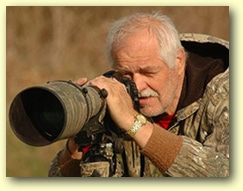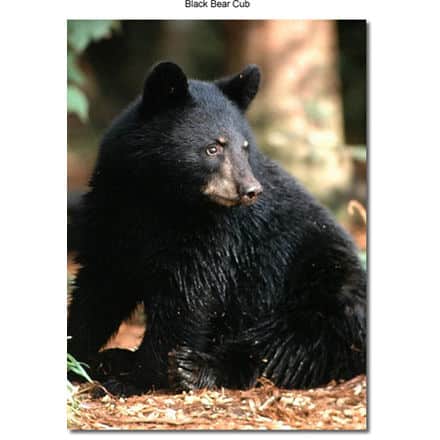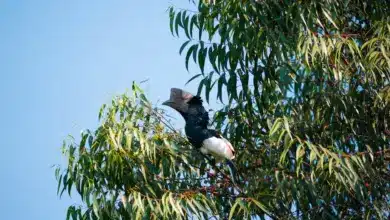Etiquette Ideas to Enhance Watching Wildlife
Every year millions of people travel for vacations. If asked what they saw, the wildlife will always be a part of their reply. Much of the experience of wildlife watching is that one never knows what they will see. While many species are common (deer), others are very difficult (mountain lion) to see, even in the best of circumstances……there are several things one can do greatly improve the chances of seeing wildlife in the native habitats.
Patience is the primary trait needed to incorporate wild animals into a viewing program. One must spent copious amounts of time in the field to see that for which one searches. Even then, being in the right place at the right time is what determines what one sees.
If one expects to go to a place – let’s say, Yellowstone National Park – and see deer, black bear, grizzly bear, elk, pronghorn, bison, wolves, mountain lion, moose, coyote, foxes, sheep and goats, and marten all in one day because the guide book stated they all occupied that area…..someone is going to experience disappointment. Some of the afore mentioned animals are strictly nocturnal, and they will not be seen in the daylight hours. Some will be easily seen because they exist in large numbers and are readily available. Some exist in numbers which are quite small and may be in habitats not close to the road or accessible to tourist. Yet should one visit Yellowstone five times, chances of seeing all the animals mentioned are quite good.
Remember, it is not what one sees….it is the journey…..it is the time spent outdoors…..it is attitude with which one approaches the excursion, that all put together creates the experience.
The following tips will enhance that experience:
TIP 1 Plan your outing:
Know where one is going. Does it have facilities? What are the road conditions? What are the services? What climatic conditions exist? Are maps available? What should I wear? These are all questions that one should answer before embarking on an excursion. ALWAYS CARRY WATER.
TIP 2 Learn about the wildlife one is pursuing.
An informed individual will see more animals than one that “flys by the seat of their pants.”
TIP 3 Be there when animals are active.
Most animals are active at sunrise, even the nocturnal ones, and lots are active at dusk. Most animals bed down at mid day, exception being reptiles as they like the warmer temperatures of that time. Many animals are active before and after storms. Viewing in the deserts is best on cloudy days.
TIP 4 Many forms of wildlife follow seasonal traits.
Birds migrate, some animals species migrate. To see hummingbirds in Montana in April is not going to happen, however, one should see many in July and August. Be there when the animals are.
TIP 5 Make use of books and field guides.
As stated before….. an informed individual will enjoy their trip more. They can get information on what animal is found at any said location, what they eat, when they give birth, and when the reproduce, and all these facts increase a viewing sight, as well as, enhanced behavior. Books are available for identification for birds and flowers, as it is more fun when one can know what they are watching.
TIP 6 Use binoculars or spotting scopes.
These instruments will bridge the distance between the animals and oneself.
TIP 7 Move slowly and quietly.
There are several ways to get close to wild animals. In most National Parks, animals are habituated to cars…..One can stay in their car and allow the animal come to them. One can find a spot and sit down and wait for the animal to come to them. Or one can quietly stalk the wildlife. This is done by walking a few steps, then stop, and look and listen. Then proceed slowly again. Walk into the wind avoiding sticks and leaves, and use trees and rocks as blinds as one proceeds. Wear camouflage clothing as these things will enhance the chances of getting closer to the animals.
TIP 8 Never touch wild animals, especially babies.
Babies may appear to be abandoned but in actuality the parents are nearby. If one should touch them, there is a chance that the human scent could prevent the parents from feeding the babies. Also most animals carry diseases….in touching an animals, ones chances of contacting that disease is increased.
TIP 9 Some wildlife can be dangerous.
Maintain a safe distance so as not to be attacked. Never get between a mother and their babies. BE ALERT.
TIP 10 Enjoy wildlife at a distance.
There is such a thing as getting to close. Animals have a “fight or flight” distance whereby they will do one or the other. If an animal stops feeding, or raises its head suddenly, or changes direction abruptly, or stands up suddenly….chances are one is at that distance. In many National Parks, there are stated distances that must be maintained. Should one not follow the suggested guidelines, rangers will arrest the guilty party.
TIP 11 Honor the rights of other viewers.
Keep ones voice low when talking. Be patient and allow others to experience the quality type of experience that oneself would like to enjoy. Take only pictures, leave only footprints. Leave a habitat better than it was found……Pick up litter and dispose of it properly Do not collect artifacts, or flowers or babies as in most places it is illegal.
TIP 12 Honor the rights of private land owners.
ALWAYS ASK PERMISSION TO GO ON PRIVATE PROPERTY
TIP 13 Leave pets at home.
In many parks it is illegal to take pets. This usually is not enforced, but allow a hypothetical situation to explain this. Rover has to go for a walk. A short jaunt down a trail is selected for that walk (always clean up behind the pet.). About a hundred yards as one goes around the bend in the trail, a bear is met. Rover starts barking and tugging on the leash. The bear, feeling challenged, charges. What results from this encounter?
As one can see rules and regulation can apply.to even wildlife viewing. Most of the rules are common sense but all are for the protection of the wildlife or the viewer.




